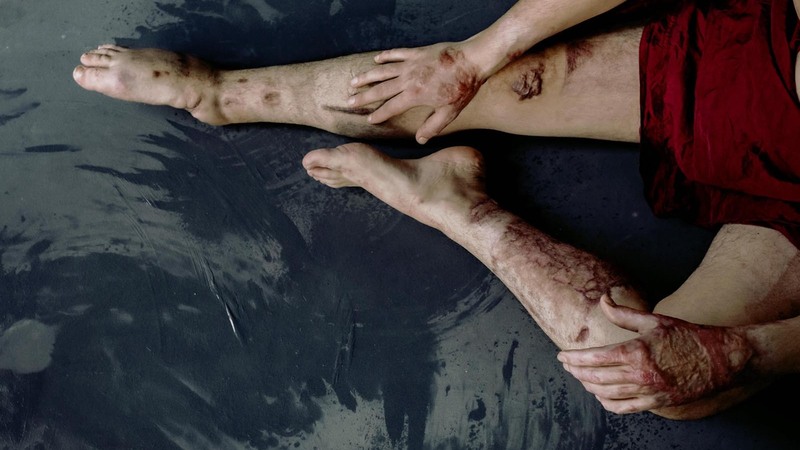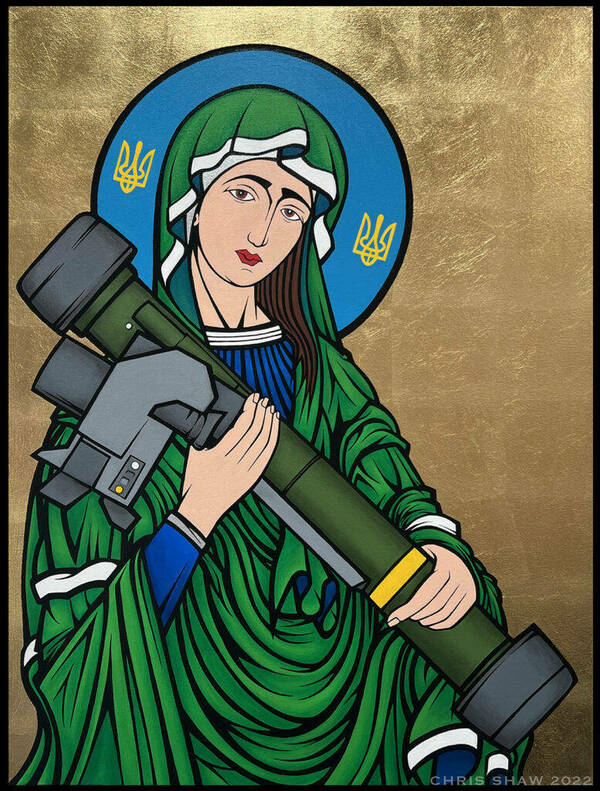
Ukrainian Art as Protest and Resilience: Project background
This exhibition seeks to highlight Ukrainian protest and resilience during the invasion by Russia and how public art has become a medium of resistance, traumatic mediation, and expressions of identity. Faced with the threat of cultural annihilation, Ukrainian artists have brought Ukrainian identity, history, and culture to the fore.
As a historian researching art and visual culture during the Holocaust, I was immediately captivated by the incredible public art appearing in war-ravaged Ukraine, which offered the world a window into Ukrainian resilience in face of Russian oppression. In the months following the full-scale invasion of Ukraine that began on February 24, 2022, art projects appeared all over the world showcasing unity with Ukraine, including digital storytelling on TikTok, paintings in France, and the now infamous Banksy murals in Kyiv. Even Notre Dame students created digital art as a means of protesting the war. Art has become a critical space for international protest and unity.

In creating this exhibition, we sought to elevate the voices of Ukrainian artists whose work captures the trauma of warfare and the resiliency of a people fighting for their very existence. Almost all of the students worked directly with the artists themselves and connected with them via social media and even 3:00 a.m. Zoom calls.
Each piece and artist selected for this exhibition emphasize how art has become a vital space of resistance in Ukrainian culture where both the producers of art and consumers can protest Russian aggression. In face of the threat of annihilation, Ukrainians have used art to powerfully assert the resiliency of their heritage, culture, and identity. Traditional motifs, cultural symbols, and historic decorative paintings unite many of these works of art: showing the resiliency of the Ukrainian people and nation.
This research has also taught us about a new facet of 21st-century warfare: vast visuality. In our increasingly visual world, art is being shared in spaces accessible to most: public spaces, social media, people’s bodies (tattoos and fashion), and streamed online. As Yaryna Pysko MGA ’24 powerfully stated in her introduction, we live in a world where the horror of Russian brutality is live-streamed to the world; and conversely, via the virtual and public sharing of Ukrainian art, we have also witnessed creative resistance to that same brutality.
We are extraordinarily grateful to Yaryna, who, while navigating blackouts and internet access in Lviv, met with students via Zoom, sent them comments and insight, translated material, and helped them contact artists. Thank you to Yaryna for leading us in this project, the research assistants who empathetically carried out this research, and moreover, the Ukrainian artists whose resistance has inspired us.
Further Reading
This project draws inspiration from a plethora of new public history projects and scholarship that examine the intersection of art and warfare, including:
Public History and Digital Exhibitions
- "The Arts of War: Ukrainian Artists Confront Russia," by Blair A. Ruble and The Wilson Center.
- The Captured House.
- Ukraine War Art Collection: Art During the War, Ukrainian Ministry of Culture.
Media
- Jason Baubien, “An artist in Ukraine captures the war in black and white,” NPR, June 2022.
- The Daily Podcast, “The Story Behind a War Defining Photograph,” New York Times, March 2022.
- Jason Farago. “In Paris Then, in Kyiv Now, Visions of Freedom and Bravery,” New York Times, December 2022.
- Jason Farago. “The Role of Art in a Time of War,” New York Times, July 2022.
- Joshua Hammer. “The Race to Save Ukraine’s Sacred Art,” Smithsonian Magazine, July/August 2022.
- Susan Stamberg, “Meet the Ukrainian women who make art in the face of war,” NPR, August 2022.

Abigail Lewis is postdoctoral research associate at the Nanovic Institute for European Studies. She received her Ph.D. in European History in 2022 from the university of Wisconsin-Madison and a B.A. in History in 2012 from UNC-Chapel Hill. Her scholarship focuses on photography and the politics of memory in post-World War II Europe. Her research and teaching methods use visual and material culture to understand experiences of conflicts including warfare, occupation, revolution, and conquest in European history. Lewis’ previous fellowships include: a fellowship at the United States Holocaust Memorial Museum, a Chateaubriand Dissertation Fellowship, a Bourse Jeanne Marandon in France, a DAAD language fellowship in Germany, and the George L. Mosse Exchange Fellowship at the Hebrew University of Jerusalem, Israel.
Header image: by Marta Syrko, Ukrainian photographer. Used with permission from the artist.
Body image: “St Javelin” by Chris Shaw, acrylic and metal leaf on canvas, completed in March 2022. Image used with permission from Chris Shaw and saintjavelin.com.
Project support from the Nanovic Institute provided by: Anna Dolezal, Abigail Lewis, Jennifer Lechtanski, and Gráinne McEvoy.